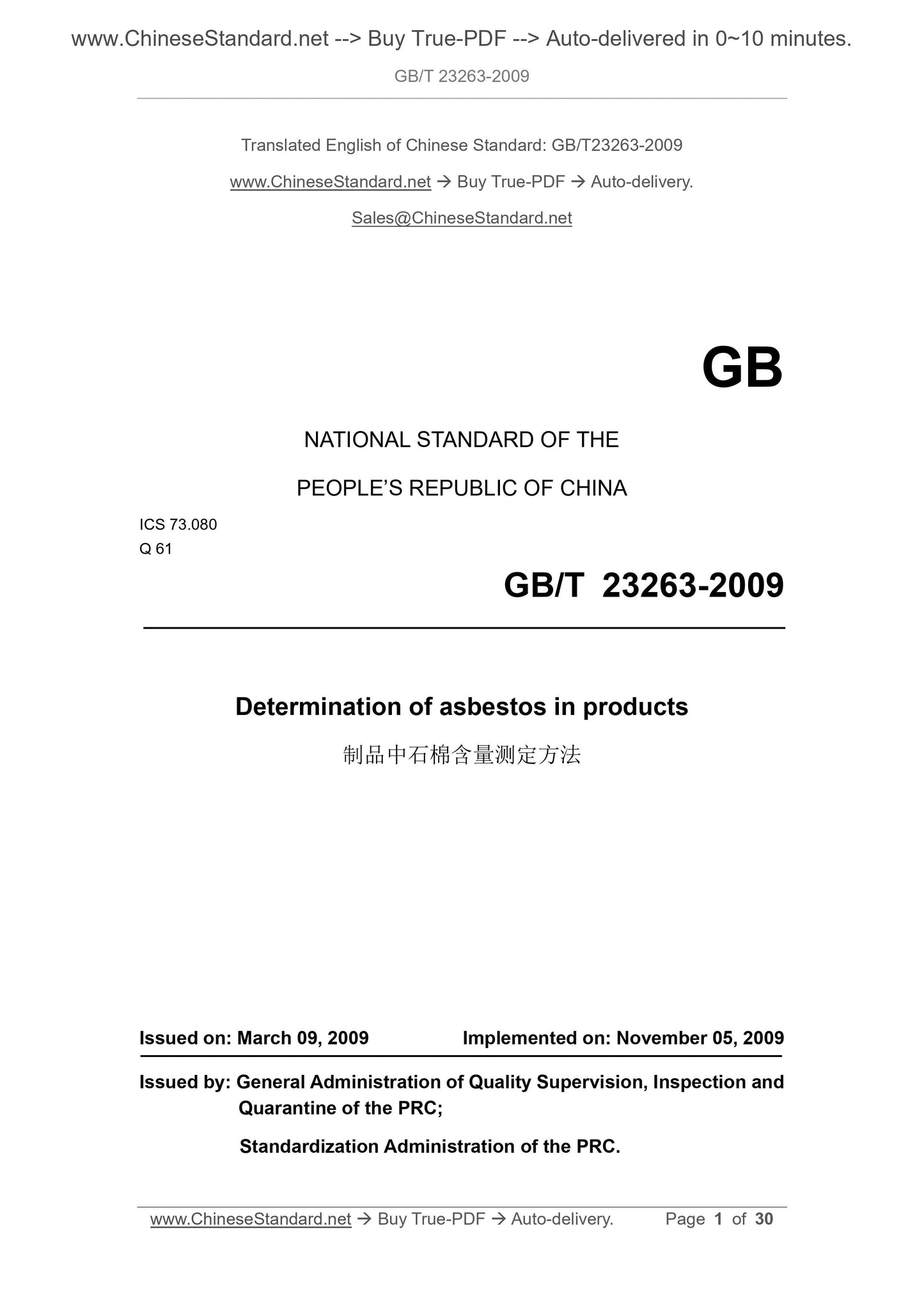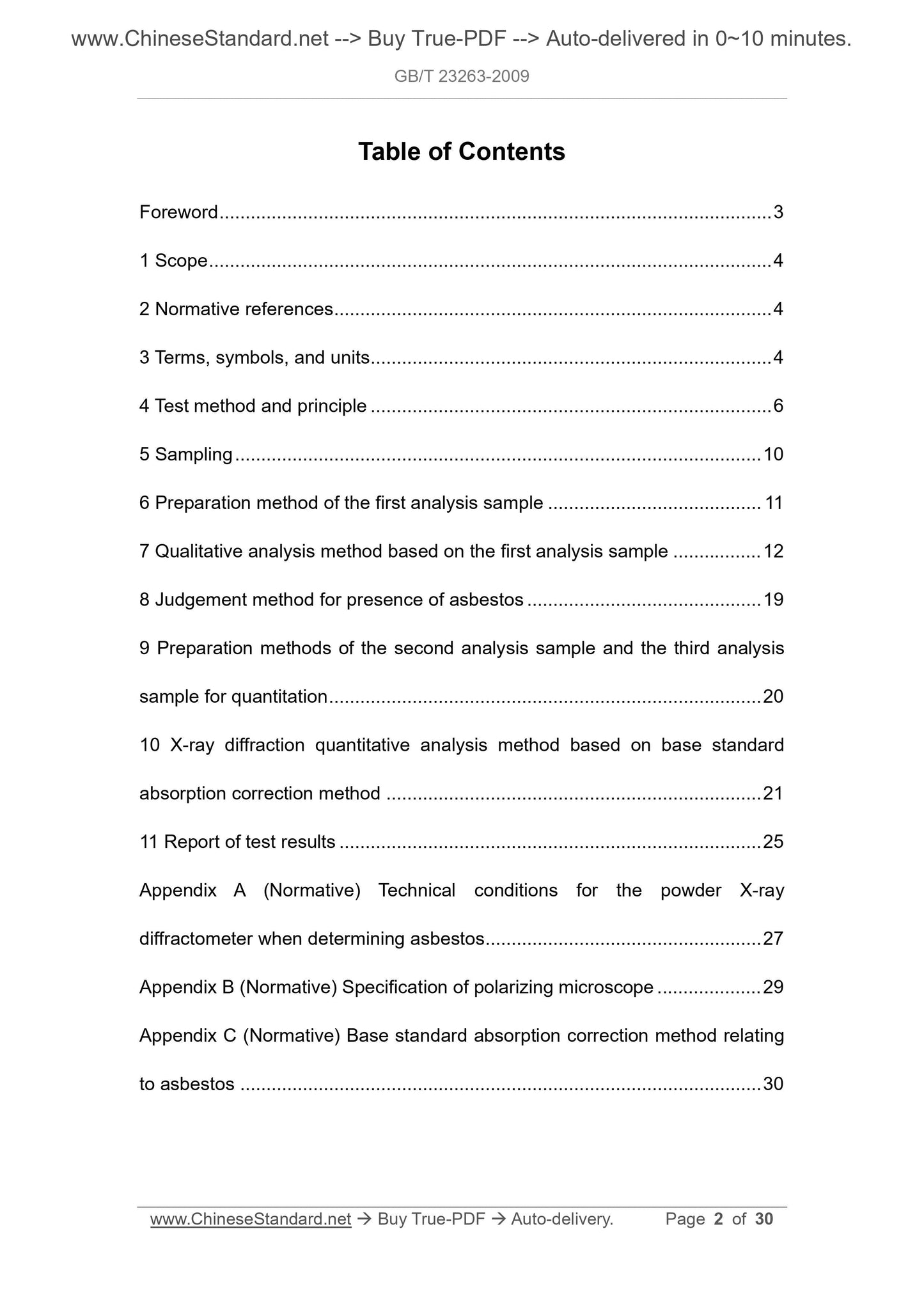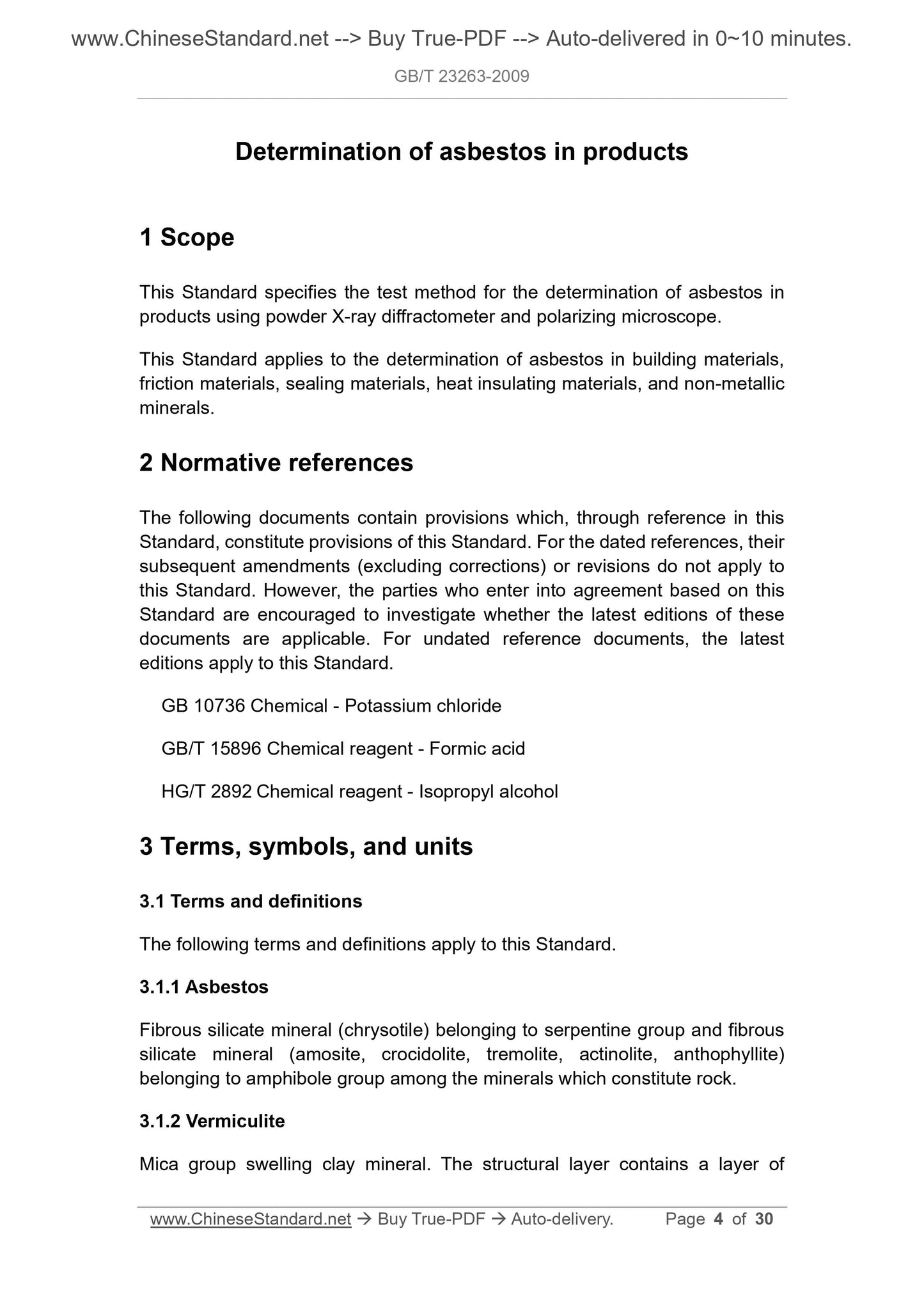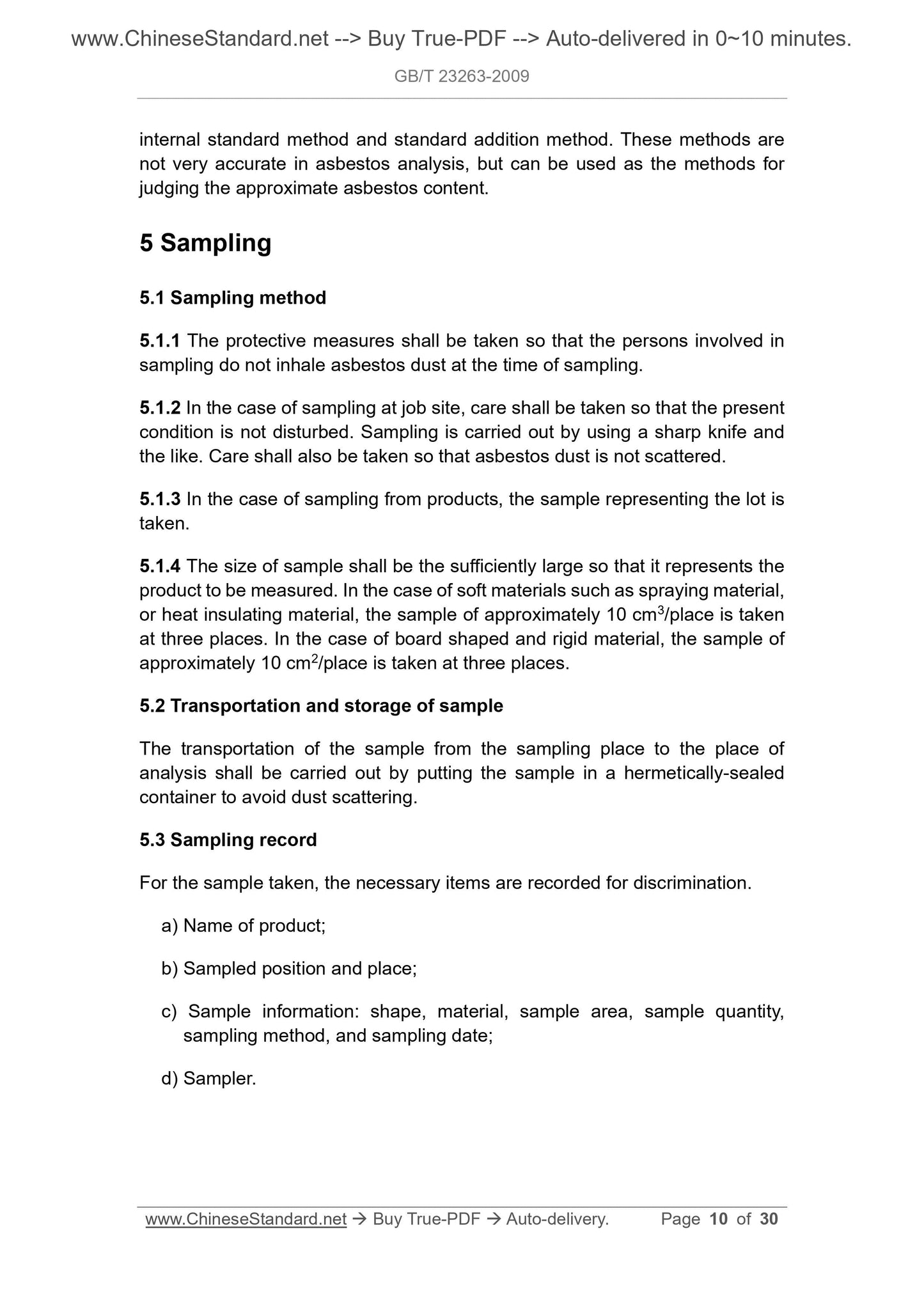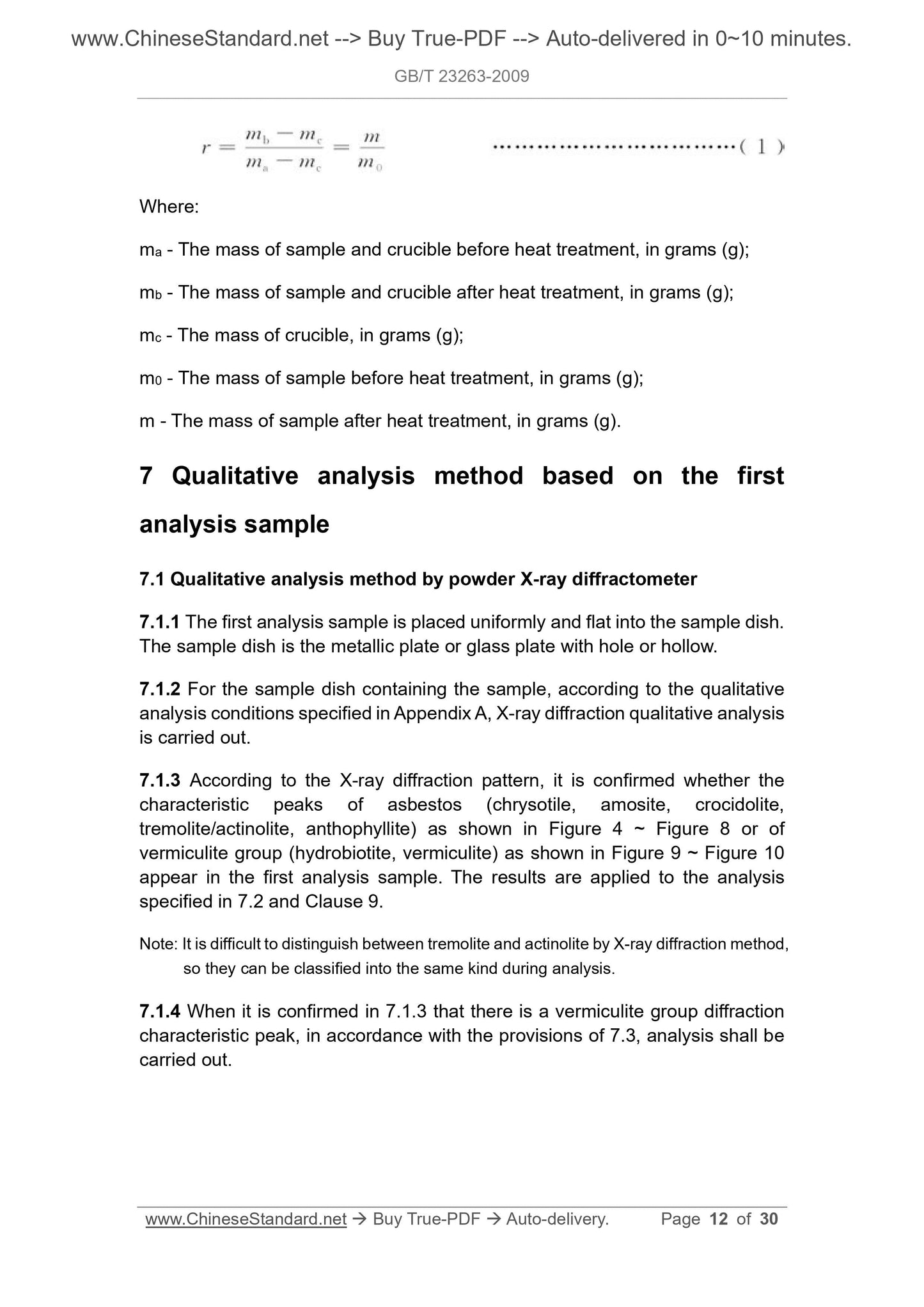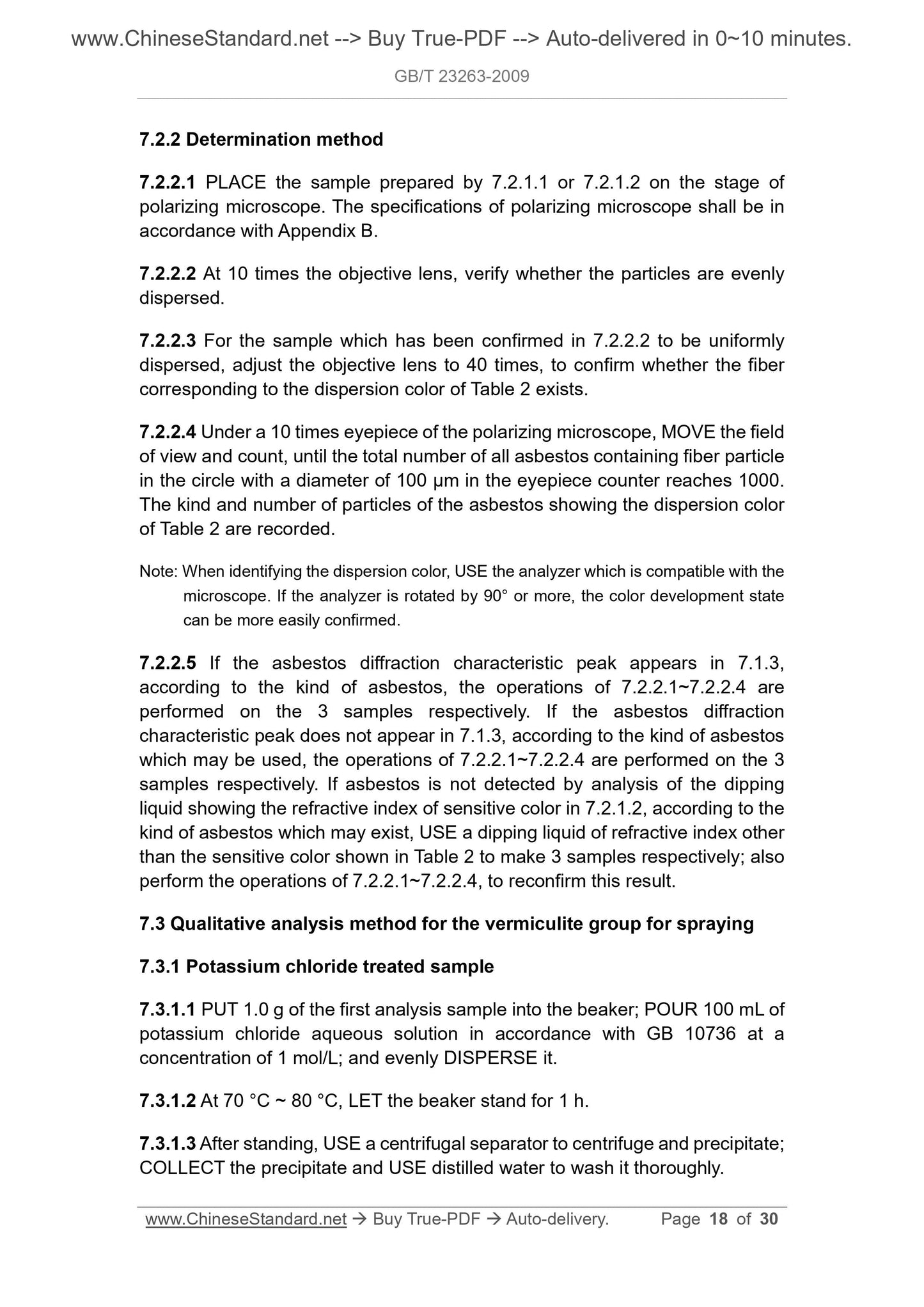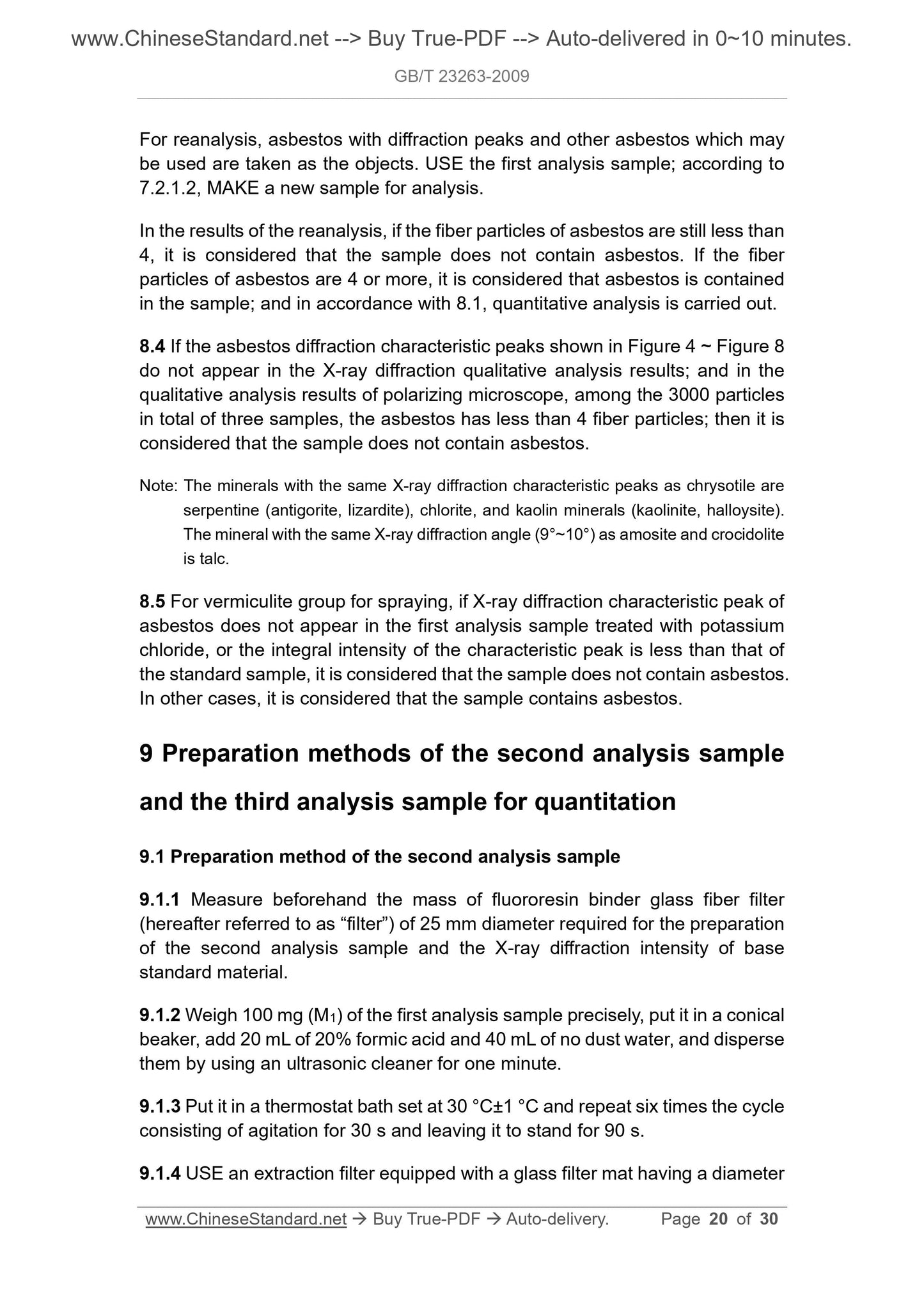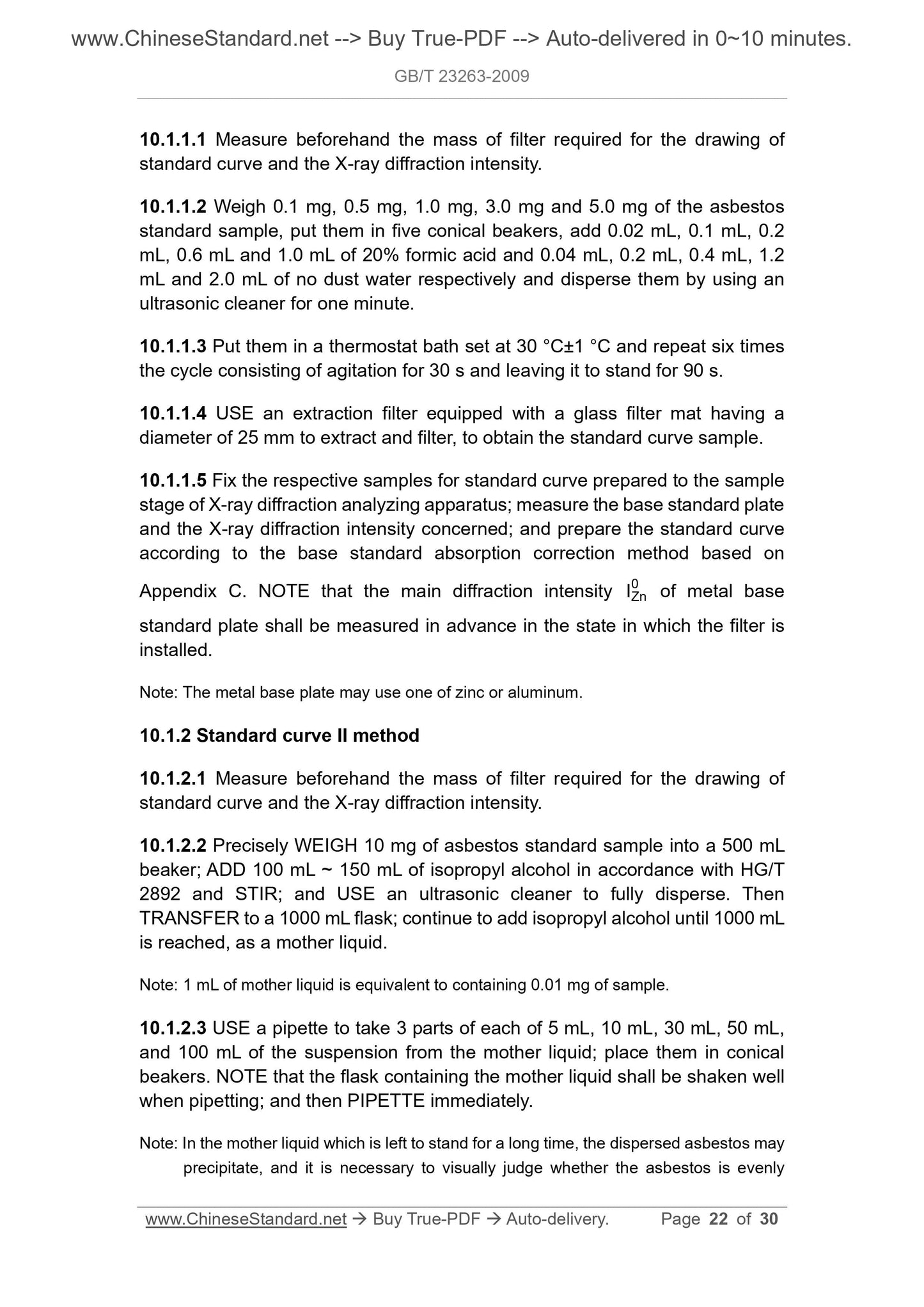1
/
of
8
www.ChineseStandard.us -- Field Test Asia Pte. Ltd.
GB/T 23263-2009 English PDF (GB/T23263-2009)
GB/T 23263-2009 English PDF (GB/T23263-2009)
Regular price
$145.00
Regular price
Sale price
$145.00
Unit price
/
per
Shipping calculated at checkout.
Couldn't load pickup availability
GB/T 23263-2009: Determination of asbestos in products
Delivery: 9 seconds. Download (and Email) true-PDF + Invoice.Get Quotation: Click GB/T 23263-2009 (Self-service in 1-minute)
Newer / historical versions: GB/T 23263-2009
Preview True-PDF
Scope
This Standard specifies the test method for the determination of asbestos inproducts using powder X-ray diffractometer and polarizing microscope.
This Standard applies to the determination of asbestos in building materials,
friction materials, sealing materials, heat insulating materials, and non-metallic
minerals.
Basic Data
| Standard ID | GB/T 23263-2009 (GB/T23263-2009) |
| Description (Translated English) | Determination of asbestos in products |
| Sector / Industry | National Standard (Recommended) |
| Classification of Chinese Standard | Q61 |
| Classification of International Standard | 73.080 |
| Word Count Estimation | 18,128 |
| Date of Issue | 2009-03-09 |
| Date of Implementation | 2009-11-05 |
| Quoted Standard | GB 10736; GB/T 15896; HG/T 2892 |
| Adopted Standard | JIS A1481-2008, NEQ |
| Regulation (derived from) | National Standard Approval Announcement 2009 No.2 (Total No.142) |
| Issuing agency(ies) | General Administration of Quality Supervision, Inspection and Quarantine of the People's Republic of China, Standardization Administration of the People's Republic of China |
| Summary | This standard specifies test methods using powder X -ray diffraction and polarized light microscopy determination of asbestos content in products. This standard applies to construction materials, friction materials, sealing materials, determination of insulation materials and non-metallic mineral asbestos content. |
Share
